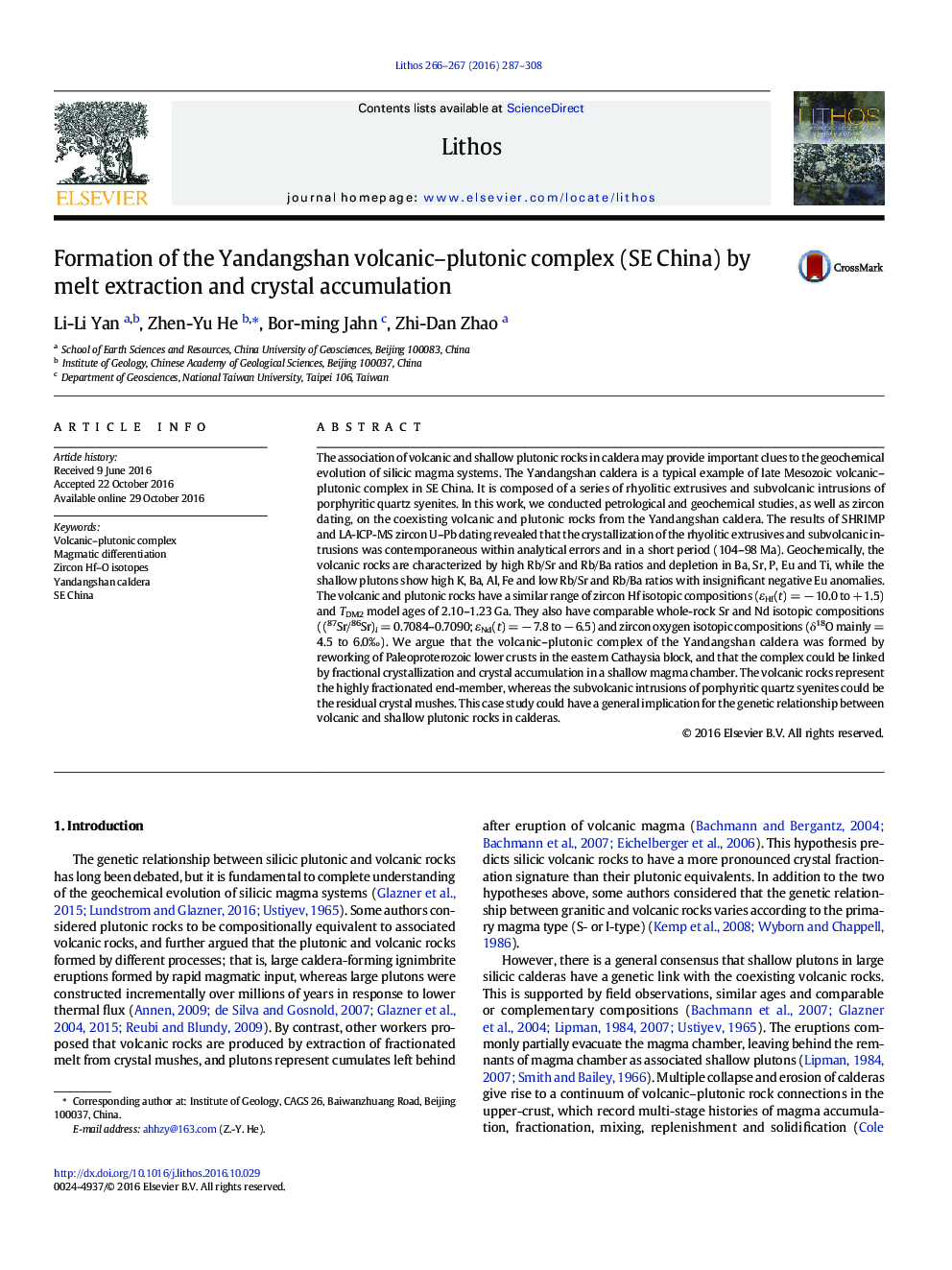| Article ID | Journal | Published Year | Pages | File Type |
|---|---|---|---|---|
| 6482039 | Lithos | 2016 | 22 Pages |
â¢The coexisting volcanic rocks and shallow plutons in the Yandangshan caldera are comagmatic.â¢The Yandangshan volcanic rocks represent the evolved and highly fractionated magma.â¢The shallow plutons in the Yandangshan caldera represent the residual crystal mushes.â¢The genetic relationship between volcanic and shallow plutonic rocks in calderas was emphasized.
The association of volcanic and shallow plutonic rocks in caldera may provide important clues to the geochemical evolution of silicic magma systems. The Yandangshan caldera is a typical example of late Mesozoic volcanic-plutonic complex in SE China. It is composed of a series of rhyolitic extrusives and subvolcanic intrusions of porphyritic quartz syenites. In this work, we conducted petrological and geochemical studies, as well as zircon dating, on the coexisting volcanic and plutonic rocks from the Yandangshan caldera. The results of SHRIMP and LA-ICP-MS zircon U-Pb dating revealed that the crystallization of the rhyolitic extrusives and subvolcanic intrusions was contemporaneous within analytical errors and in a short period (104-98 Ma). Geochemically, the volcanic rocks are characterized by high Rb/Sr and Rb/Ba ratios and depletion in Ba, Sr, P, Eu and Ti, while the shallow plutons show high K, Ba, Al, Fe and low Rb/Sr and Rb/Ba ratios with insignificant negative Eu anomalies. The volcanic and plutonic rocks have a similar range of zircon Hf isotopic compositions (εHf(t) = â 10.0 to + 1.5) and TDM2 model ages of 2.10-1.23 Ga. They also have comparable whole-rock Sr and Nd isotopic compositions ((87Sr/86Sr)i = 0.7084-0.7090; εNd(t) = â 7.8 to â 6.5) and zircon oxygen isotopic compositions (δ18O mainly = 4.5 to 6.0â°). We argue that the volcanic-plutonic complex of the Yandangshan caldera was formed by reworking of Paleoproterozoic lower crusts in the eastern Cathaysia block, and that the complex could be linked by fractional crystallization and crystal accumulation in a shallow magma chamber. The volcanic rocks represent the highly fractionated end-member, whereas the subvolcanic intrusions of porphyritic quartz syenites could be the residual crystal mushes. This case study could have a general implication for the genetic relationship between volcanic and shallow plutonic rocks in calderas.
